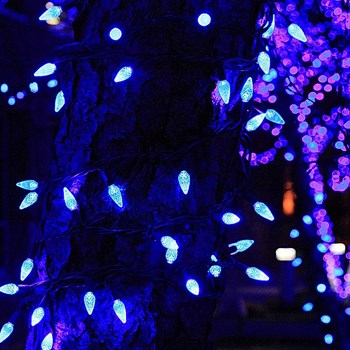
It’s that time of the year again – the Halloween candy is long gone, Thanksgiving turkeys are being ordered, and Christmas, Hanukkah, Kwanzaa, and New Year’s Eve are all approaching, complete with sparkly lights and ornaments, as well as a parade of parties and other festivities. Multifamily buildings – including condos, HOAs, and co-ops – are home to people of many backgrounds, faiths and cultural traditions, so it can sometimes be a little tricky to figure out the best way to observe major holidays.
“Holiday decorations and observance need to be [perceived] as equal and fair,” says Bill Worrall, corporate vice president at FirstService Residential Florida in Miami. “Unless it is a religious community, then that needs to be exclusively delivered as is prudent.”
So what should you keep in mind for your own community as the holidays approach? Let’s take a look.
Check the Halls
Most people take things like putting up decorations or posting holiday announcements for granted – but in fact, those activities are governed by multiple levels of rules, regulations and sometimes laws. Scott J. Sandler, an attorney based in Farmington, Connecticut, says having rules regarding decorations can be rough territory to navigate. “It’s very difficult, because one man’s art is another man’s trash. With holiday decorations, you want to allow for a reasonable amount of tasteful expression while maintaining control over the manner of expression.”
At the most fundamental level, you have the house rules and regulations for a given building or HOA. According to Gregg R. Kurlander, of counsel to New York City-based law firm Kucker & Bruh LLP, “A board in their discretion may regulate the appearance of public hallways, lobbies, elevators and other common areas throughout the building, and may implement enforcement policies if the rules are violated. The same holds true when it comes time to decorate for the holidays. Although not all cooperatives have formal written decorating policies, the inclusion of decorating policies in a building’s bylaws or house rules will help greatly reduce the possibility of infractions or contentions between neighbors, and will ensure that decking the hallways with boughs of holly is fun, festive and neighborly.”
Thus, many associations have rules limiting the size of individual holiday displays, as well as where they can be placed on the exterior of a unit. Such rules also often restrict when the display can be put up and when it must be taken down. “It’s common for community associations to have rules regulating what owners may hang, place or display on the exterior of residences,” says Hubert Cutolo, an attorney at Freehold, New Jersey-based law firm Cutolo Barros. “These rules should communicate clearly and concisely what is and is not permitted in terms of decorations, while making it a point to be as fair as possible to everyone in the community, regardless of how or what they celebrate.”
“Any rules governing decorations should be drafted to treat all members or occupants equally,” Cutolo continues. “It bears emphasis that any rules should avoid regulating the content of a proposed decoration to prevent any discriminatory practice.”
In other words, banning any and all hallway or door decorations is probably okay – if more than a little stodgy – but banning just one kind of decorations, like Diwali lights, for example, or Hanukkah menorahs, is most definitely not. Doing so could lead the board to run afoul of residents’ First Amendment rights, says Frank Flynn, owner and managing partner of the Boston-based Flynn Law Group. “If a condo wants to restrict decorations, they need to have an across-the-board restriction [on] all decorations,” Flynn says, and even then, “There’s no guarantee that there won’t be a court challenge. Having such a restriction in your bylaws does not make you litigation-proof.”
Not only must residents be mindful of the CCRs of their own community, but property managers must also familiarize themselves with applicable state and federal laws. At no time can the former conflict with the latter – and if they do, state and federal law will inevitably trump individual community bylaws or house rules.
Sometimes this legal hierarchy can be the cause of much chagrin for both boards and neighbors alike. Such was the case of a Louisiana woman named Sarah Childs, who arranged Christmas lights on her roof in the shape of a giant hand ‘flipping the bird.’ After a lot of (pretty understandable) pushback from neighbors and her condo board – including threats of arrest – the matter went to court, where a judge ruled in Ms. Childs’ favor, allowing her unorthodox display to remain up. The judge ruled that the HOA’s demand to take down the twinkly gesture violated her constitutional right to free speech and due process.
According to attorney Charles VanderVennet of the Law Office of Charles T. VanderVennet PC in Arlington Heights, Illinois, “As a starting point, I suggest that board members become fluent in the language of the association’s governing documents and applicable law. Guidance from the legal counsel may be necessary to interpret or translate those provisions...[and] allow the board to tailor rules and regulations covering holiday decorations that stay within the dictates of both the recorded covenants and the law.”
VanderVennet goes on to say that while some residents might find their association’s rules too strict or limiting, having a legally sound, well-researched policy on the books is crucial in order to be able to defend against accusations of bias or free speech infringement. “It’s better for the board to face complaints with [clear language] as ‘backup’ than to face complaints from owners arguing that the rules are improper, too lenient, or unenforceable without [that language] – or worse yet, based on a concept that someone thought was a good idea without having done the necessary homework to support it.”
Inspect the Halls
If your building or HOA is considering amending, updating, or otherwise changing its decorating policy, there’s one other key component to factor in, along with input from your legal counsel: feedback from residents themselves. While of course you can’t make everyone happy, you can take steps to make sure everyone feels their voice is at least being heard and respected. Those steps could take the form of a questionnaire, a committee, or even a referendum vote to fine-tune your community’s policy.
If you go with the latter approach, Kurlander suggests remembering the following when adopting or modifying preexisting rules:
TIME - Rules should dictate the earliest date that decorations may be affixed, as well as when they must be taken down. Again, boards should do their homework to ensure that the time frames implemented actually sync up with the length of each respective holiday.
PLACE - Rules should specify what parts of which common areas may be decorated, and which should be left alone.
MANNER - Rules may limit the use of decorations to those that are ‘tasteful’ and/or ‘appropriate’ with the hope and expectation that residents are capable of understanding and adhering to generally acceptable standards. Bylaws may also state how decorations are to be affixed to avoid damage to common areas.
Respect the Halls
Parties and get-togethers are another hallmark of the holiday season, and it’s common for condo and HOA residents to host events in their building or HOA’s common areas. When a party involves non-resident guests, it’s important for hosts and guests alike to observe the community’s rules, and be respectful of the property and its residents.
“The successful holiday events of which I am aware are inclusive efforts to celebrate wide-ranging aspects of the holiday season,” says VanderVennet. Worrall agrees, adding that if there’s ever any question about the legality – or just the wisdom – of a rule, restriction, or association-sponsored event, “Use your professionals – that’s what they’re there for. Managers should also reach out to their peers across the management company.”
Being inclusive and making sure everyone feels welcome to participate (or not) in holiday events is part of running a respectful and socially cognizant community. With knowledge of legal guidelines, a sense of the personal needs of your residents, and just plain old good manners, boards and managers can navigate the holidays graciously and festively.
Oba Gathing is a freelance writer and contributor to New England Condominium.






Leave a Comment